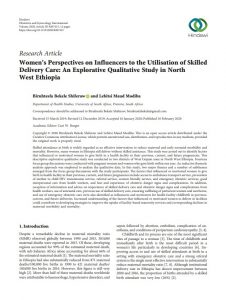
Skilled attendance at birth is widely regarded as an effective intervention to reduce maternal and early neonatal morbidity and mortality. However, many women in Ethiopia still deliver without skilled assistance. This study was carried out to identify factors that influenced or motivated women to give birth in a health facility in their previous, current, and future pregnancies.
This descriptive explorative qualitative study was conducted in two districts of West Gojjam zone in North West Ethiopia. Fourteen focus group discussions were conducted with pregnant women and women who gave birth within one year. An inductive thematic analysis approach was employed to analyze the qualitative data.
In this study, two major themes and a number of subthemes emerged from the focus group discussions with the study participants. The factors that influenced or motivated women to give birth in health facility in their previous, current, and future pregnancies include access to ambulance transport service, prevention of mother to child HIV transmission service, referral service, women friendly service, and emergency obstetric services, good interpersonal care from health workers, and fear and experience of obstetric danger signs and complications.
In addition, reception of information and advice on importance of skilled delivery care and obstetric danger signs and complications from health workers, use of antenatal care, previous use of skilled delivery care, ensuring wellbeing of parturient women and newborns, and use of emergency obstetric care were also identified as influencers and motivators for health facility childbirth in previous, current, and future deliveries.
Increased understanding of the factors that influenced or motivated women to deliver in facilities could contribute to developing strategies to improve the uptake of facility-based maternity services and corresponding declines in maternal morbidity and mortality.